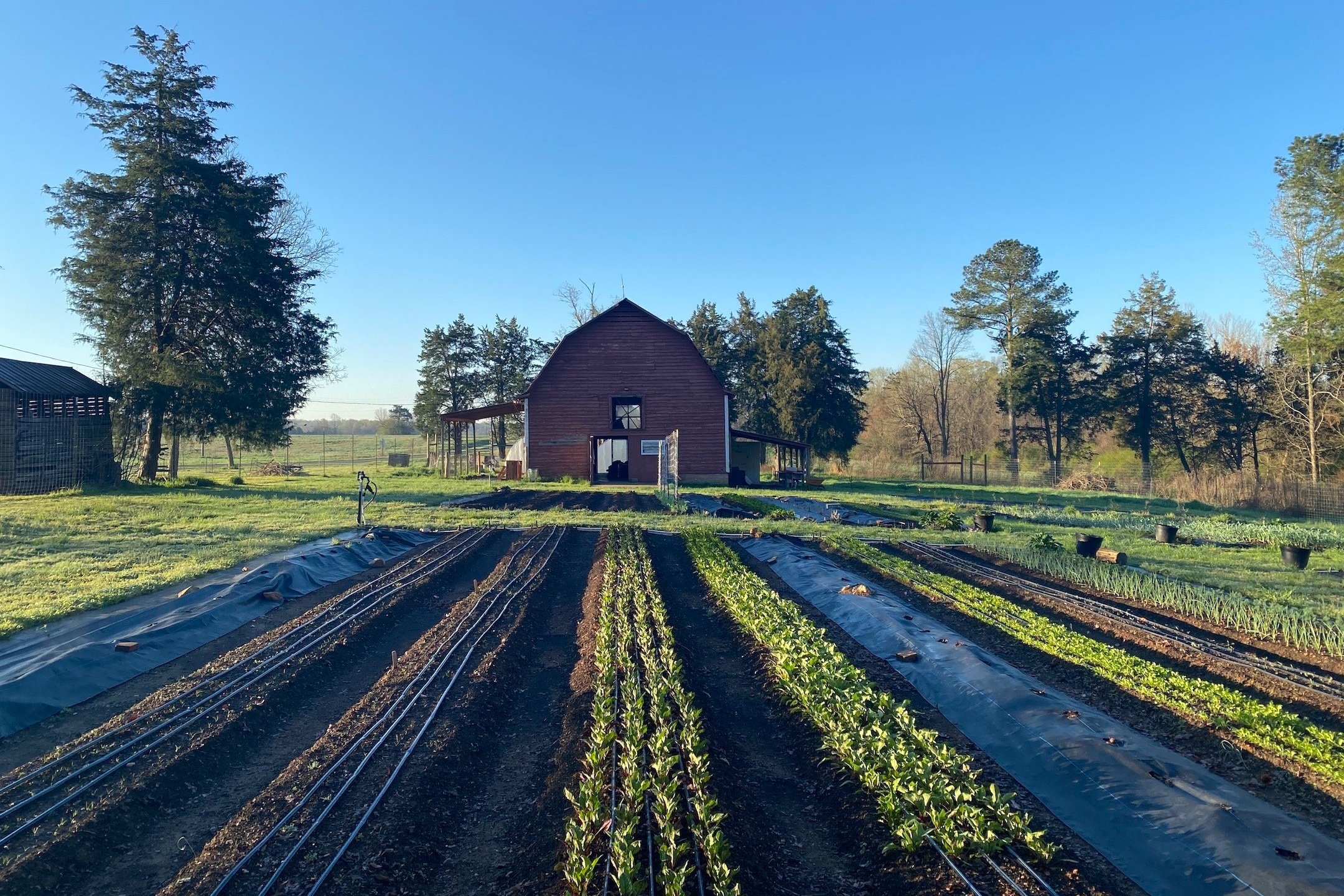Farm Notes
Even though it’s not even February yet, I already feel like spring is basically HERE and my to-do list for the farm grows longer by the day… thankfully the amount of sunlight each day is getting longer too! This week we “broke ground” on our new perennial garden, and I am SO excited to watch this space transform. Right now, it is honestly the ugliest spot on the farm (see photo below for proof)… but with a little love (and a lot of muscle), I know that this will soon be one of our favorite places to sit and hang out among the plants.
Our soon-to-be perennial garden!
Rough sketch design of our new perennial garden.
I’ve been calling this our perennial garden because, well, it’s where we plan to plant lots of perennials that will stay in the same place year after year (as opposed to annuals, which only last in the ground for one season)! Some of the perennials that we will be planting include… blackberries, asparagus, ramps (wild onions), artichokes, herbs like rosemary, thyme, sage, and lemongrass; medicinal plants like comfrey, yarrow, and plantain; as well as flowers like milkweed, coneflower, black-eyed susans, etc.
Whether you live on a big farm or have a small home garden, planting perennials is definitely a commitment – because hopefully, that plant will stay in the same spot for many, many years! Which means it’s important to do your homework to source high quality perennial plants, and to choose + prepare your growing site appropriately.
All this winter I’ve been busy doing research for this new garden space, and I want to share some of the resources that I’ve gathered with y’all!
BOOKS ABOUT PERENNIALS
WHERE TO SOURCE PERENNIAL PLANTS
Your local nursery / garden store!
Nourse Farms (shipping across the US)
Stark Bros (shipping across the US)
Edible Landscaping (shipping across the US)
Country Farm & Home (only for locals in the NC Piedmont, no shipping)
ONLINE PLANTING GUIDES
Kitchen Notes
It’s easy to get stuck in a cooking rut as we head into doldrums of February – so this colorful, hearty winter slaw with a zippy sesame ginger vinaigrette is a fresh take on the same old veggies you’ve been cooking with all winter! It’s a very simple and flexible recipe, just use whatever winter veg – like carrots, beets, cabbage, turnips, kohlrabi, et – that you have on hand.
WINTER VEGGIE SLAW WITH SESAME GINGER VINAIGRETTE
INGREDIENTS
For the slaw
2-3lbs assorted winter veggies (carrots, beets, kohlrabi, turnips, and cabbage are all great), shredded
1 bunch cilantro OR parsley, roughly chopped
For the vinaigrette
1 garlic clove
1 teaspoon finely minced ginger
3 tablespoons rice vinegar
1 teaspoon soy sauce
1 teaspoon yellow miso paste
1 teaspoon honey
5 tablespoons canola oil
2 tablespoons toasted sesame oil
2 tablespoons toasted sesame seeds
PREPARATION
To prepare the slaw, carefully shred the vegetables with a box grater into a large bowl.
One handful at a time, squeeze any moisture out of the shredded vegetables and place them in a separate bowl (this prevents the slaw from getting watery).
Add the chopped herbs (cilantro or parsley) to the bowl with the shredded veggies.
To make the sesame ginger vinaigrette, simply combine ingredients together in a small processor and blend until smooth. Taste and adjust seasoning as needed.
Pour the vinaigrette into the salad bowl and toss together to combine. Allow to sit for 20-30 minutes before enjoying, if possible. Taste and adjust seasoning as needed.
Today’s Stats
Low temp: 26F
High temp: 47F
Sunrise: 7:21am
Sunset: 5:40pm
Moon phase: Waning Crescent
Additional notes: Snow!











